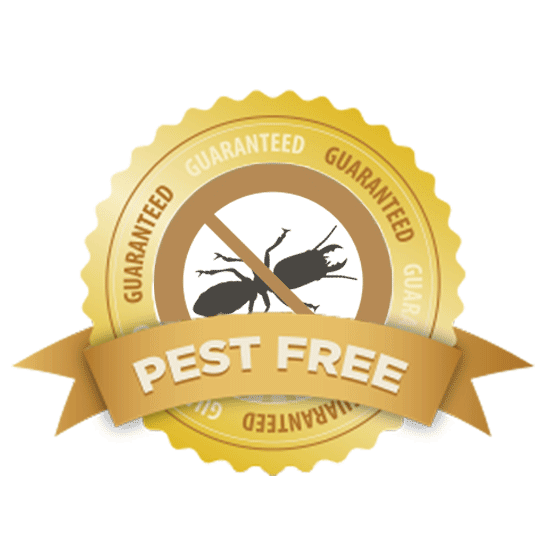High Quality A1 Pest Control Services Charlotte - Secure Your Home
High Quality A1 Pest Control Services Charlotte - Secure Your Home
Blog Article
Bed Bug Treatment Malfunction: Comparing Chemical Vs. Non-Chemical Solutions
In the world of insect control, specifically when dealing with the relentless problem of bed bugs, the option between chemical and non-chemical treatment services can be a crucial one. Both methods offer distinctive benefits and drawbacks, influencing elements such as performance, safety and security factors to consider, and overall price. By taking a look at the nuanced details of each approach, a more clear understanding of which path to go after in attending to a bed pest infestation can be achieved.
Performance of Chemical Treatments
Chemical treatments for bed bug invasions have actually been extensively acknowledged for their potent and fast efficacy in removing these bugs. When considering the efficiency of chemical therapies, it is vital to recognize that they can give a fast and thorough solution to a bed bug issue. Specialist pest control experts commonly depend on insecticides to target bed bugs at numerous phases of their life process, consisting of eggs, grownups, and fairies. These chemicals typically work by interfering with the bed insects' nerves, bring about paralysis and eventual fatality.
In addition, chemical treatments have the advantage of offering residual impacts, meaning that they can continue to get rid of bed bugs also after the initial application. This recurring action is specifically advantageous in combating any kind of possible re-infestations. Furthermore, the quick activity of chemical treatments can bring relief to people encountering serious bed pest invasions, allowing them to gain back control of their space quickly.
Safety And Security Interest In Chemical Solutions
When making use of chemical services for bed insect therapy is guaranteeing the safety of owners and the atmosphere,One vital facet that requires careful factor to consider. While chemical treatments can be reliable in eradicating bed bugs, they might position dangers otherwise taken care of correctly. One of the primary safety interest in chemical services is the potential injury they can create to human health. Exposure to certain chemicals made use of in bed bug treatments can lead to respiratory issues, skin irritation, or other negative reactions, specifically in people with pre-existing conditions or level of sensitivities. Additionally, inappropriate application or dosage of chemical pesticides can result in toxic residues sticking around in the treated area, posing long-term health and wellness threats to owners.
Furthermore, the ecological effect of chemical solutions is an additional significant factor to consider. Some pesticides made use of in bed bug therapies may be dangerous to valuable bugs, wildlife, and ecosystems if they seep right into the dirt or water supply. It is necessary to utilize chemical therapies carefully, adhering to safety and security guidelines, and thinking about less poisonous alternatives to alleviate these threats and guarantee the efficient and risk-free monitoring of bed pest infestations.
Advantages of Non-Chemical Techniques
Thinking about the potential security issues and ecological impact linked with chemical services for bed pest therapy, exploring non-chemical techniques provides an encouraging choice with numerous unique benefits. Non-chemical therapies are ecologically friendly, as they do not add to air or water contamination, making them a sustainable selection for insect control.
Additionally, non-chemical services can be reliable in targeting bed insects, consisting of hard-to-reach locations where chemical therapies may not permeate - A1 exterminators charlotte nc. Methods such as heat therapy, vacuuming, heavy steam cleansing, and bed mattress encasements provide detailed eradication without the usage of harmful chemicals.
Limitations of Non-Chemical Treatments

In addition, non-chemical treatments typically call for multiple applications to accomplish successful removal. This can be time-consuming and might not constantly guarantee total elimination of all bed insects and their eggs, particularly in concealed or hard-to-reach locations.
In addition, the success of non-chemical treatments greatly relies upon appropriate application official website and thoroughness, which can be testing for individuals without expert expertise. Insufficient application of non-chemical approaches may result in insufficient removal, bring about consistent problems and the need for added treatments.
Therefore, while non-chemical therapies have their benefits, it is crucial to acknowledge these limitations and consider them when determining the most efficient method for managing bed pest invasions.
Price Comparison: Chemical Vs. Non-Chemical Options
Given the constraints connected with non-chemical therapies, a vital aspect to examine in the context of bed insect monitoring is the cost contrast in between chemical and non-chemical choices. Chemical therapies usually include the application of insecticides by experts, which can range from $250 to $900 per space, depending upon the intensity of the invasion and the dimension of the area to be dealt with. On the other hand, non-chemical therapies like warmth therapy or vapor can be much more pricey, with expenses ranging from $1,000 to $6,000 for a whole home. While the preliminary expense of chemical treatments might appear lower, multiple therapies might be called for to completely eliminate the invasion, potentially increasing the overall price. On the other hand, non-chemical options might give a more lasting and eco-friendly service, although they can be cost-prohibitive for some individuals. Ultimately, when taking into consideration the cost of bed insect treatment choices, it is essential to consider the ahead of time costs against the performance and long-lasting sustainability of the chosen approach.
Conclusion

Taking into consideration the potential safety and security problems and environmental effect linked with chemical options for bed bug therapy, checking out non-chemical approaches offers an encouraging alternative with numerous distinctive advantages.Given the restrictions associated with non-chemical treatments, an important element to evaluate in the context of bed insect management is the expense comparison in between chemical and non-chemical alternatives. In contrast, non-chemical treatments like warm treatment or vapor can be extra costly, with prices ranging from $1,000 to $6,000 for an entire home. While the preliminary price of chemical treatments may seem lower, numerous treatments may be needed to totally eradicate the infestation, potentially raising the overall expense.In conclusion, when contrasting chemical and non-chemical bed pest treatment choices, it is vital to think about efficiency, security, benefits, limitations, and cost.
Report this page